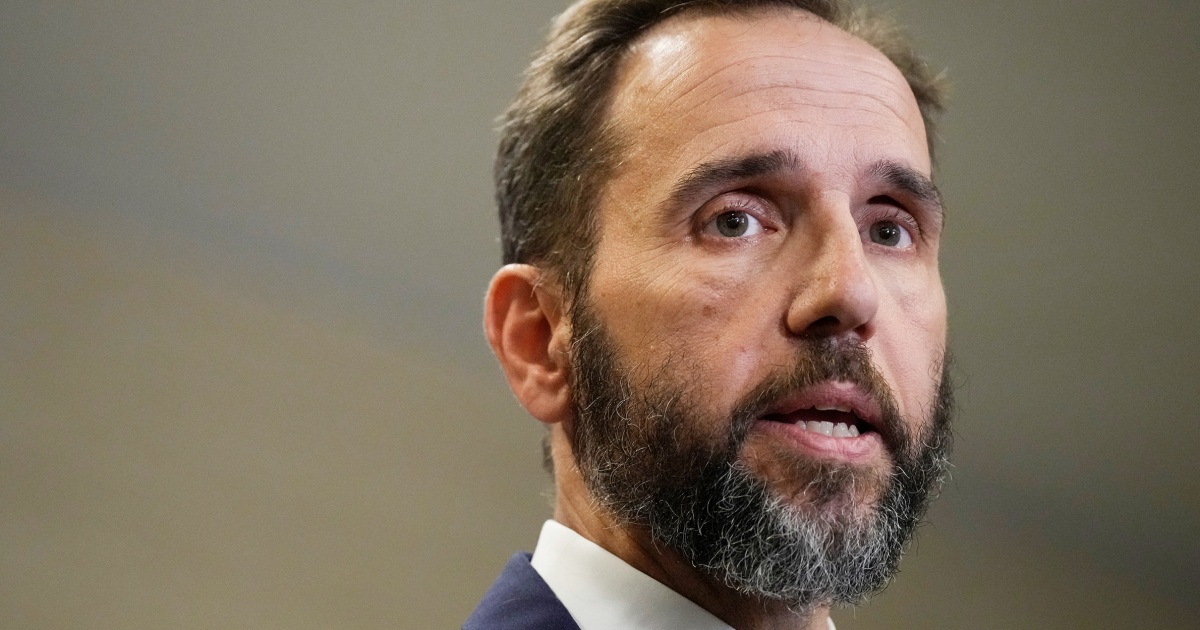When it comes to legal briefs, I can be a speed reader. But where evidence is concerned, I always prefer to take a more focused, methodical review where I can.
As of Friday afternoon, I’m continuing to pore over all 1,889 pages of the newly released, heavily redacted appendix of special counsel Jack Smith’s brief defending his superseding indictment of former President Donald Trump. But in the few hours since Judge Tanya Chutkan ordered its release, I’ve found several things that stand out already.
What I have reviewed — and the limited amount we can see — reveals that Smith alternately intends to play it safe and take risks as Chutkan assesses which of the allegations and evidence from the superseding indictment should remain in the case.
[It’s] inexplicable that the witness names are redacted, especially as the dates of the interviews are not.
First, the unsealed content within the first volume of 720-plus pages is excerpted testimony and interviews from the House Jan. 6 committee’s investigation. With one notable exception — which I’ll address — those transcripts have long been public.
That makes it all the more inexplicable that the witness names are redacted, especially as the dates of the interviews are not. That means each witness can be identified through both the dates of their interview or deposition and a comparison of the substance of their comments to public versions of the transcripts.
Specifically, the special counsel’s appendix includes portions of interviews with the following, who appear in alphabetical order: former Attorney General Bill Barr, who resigned in late December 2020; former Arizona House Speaker Rusty Bowers; former Trump deputy campaign manager Justin Clark; former senior Trump White House aide Kellyanne Conway, who left the Trump administration months before the election; Georgia election worker Ruby Freeman; Stephanie Grisham, former chief of staff to Melania Trump; White House speechwriter Vincent Haley, who helped draft the Ellipse speech; Chris Hodgson, then Vice President Mike Pence’s chief aide in the Senate; Pence’s counsel Greg Jacob; Jan. 6 rally organizer Amy Kremer; then-senior campaign adviser Jason Miller; then-campaign adviser Katrina Pierson; Georgia Secretary of State Brad Raffensperger; former Michigan Senate Majority Leader Mike Shirkey; former Trump campaign manager Bill Stepien; White House speechwriter Ross Worthington, who also contributed to the Ellipse speech; and former Trump fundraiser Caroline Wren, who later advised grocery heiress Julie Fancelli on where to direct her money in the post-election period.
What’s most interesting about this group collectively — but also advisable in the wake of the Supreme Court’s immunity ruling — is that the vast majority of these witnesses were not executive branch employees, but instead were private citizens, campaign staff or state officials Trump tried to influence. Those who did work within the executive branch — Barr, Jacob, two White House speechwriters and Grisham — were included likely because they observed or participated in an overtly political act, event or conversation or because their own decision-making or communications with others (as with the circumstances surrounding Barr’s resignation, which he discusses in the portion of his interview excerpted) provide context for understanding Trump’s own intent or knowledge.
Now, for that exception: As Politico’s Kyle Cheney observed on X, one interview was provided with fewer redactions than were previously in the public domain. Specifically, earlier this year, Rep. Barry Loudermilk, R-Ga., released a redacted version of the June 10, 2022, interview that a still-unnamed White House valet provided to the Jan. 6 committee.
The version that begins at page 169 of the first volume, however, reveals that the valet, who acknowledged that “sometimes I just don’t know how to deal with my emotions,” had a critical interaction with Trump during the early afternoon of Jan. 6. At 1:21 p.m. ET, the valet notified Trump, who was eager to see footage of his Ellipse speech, that he was not able to record it all because live TV “cut off” coverage in order to show the “rioting down at the Capitol.” According to the valet, Trump then walked straight to the Oval dining room to “go see” for himself as the valet removed Trump’s overcoat, set up the TV, and handed him the remote, at which point the valet left to retrieve Trump’s beloved Diet Coke while Trump “s[aw] it” — meaning the mounting violence at the Capitol — “for himself.”
The version that Loudermilk released in the name of “complete transparency,” however, curiously redacts many of those details.
But, of course, those are just the witnesses whose statements we can see. And while Volume 3 of the appendix contains the cover and several highlighted pages from Pence’s book “So Help Me God,” actual testimony from Pence is nowhere to be found. Or is it merely hiding in plain sight? After all, there are nearly 100 pages of fully sealed material (GA 387-481, for those following along at home) between the apparent end of the excerpt of Miller’s Jan. 6 committee deposition and the start of the portion of Pierson’s transcribed interview. And alphabetically, what, or rather who, falls between them? Pence.
But don’t take it just from me. Smith’s immunity brief recounts, in bulleted form, a series of conversations between Pence and Trump, at pages 12-14. In some cases, Smith cites Pence’s book as a source. But Smith more often credits pages from the government’s appendix within the same range I identified above. And that likely means Smith has ample testimony from Pence about his many post-election conversations with Trump about its outcome — and whether either of them had any reason to doubt or try to change it.
Whether we’ll ever read that testimony, however, is unclear. And before we ever get to courts’ analyses of whether, during the conversations he likely testified to, Pence was functioning as Trump’s adviser, rendering the evidence inadmissible, or his running mate, making it fair game, the bigger determining factor seems to be the outcome of this election.


